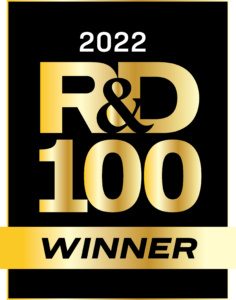APPLICATIONS OF TECHNOLOGY:
- Diagnostic tool for early detection of Alzheimer’s disease in living patients
- Disease class predictions in the absence of overt pathology
- Diagnostic for early detection of other neurodegenerative or neurological diseases
- Potential diagnostic tool for a broad range of illnesses, including COVID-19 and breast cancer
- Precision medicine
- Monitoring during therapeutic treatment
BENEFITS:
- Very early diagnosis in living patients
- Easy sample preparation
- Samples can be collected anywhere from rural to urban areas and sent for rapid testing
- Uses standard laboratory equipment
- Provides rapid results
- Wide applicability
BACKGROUND
The brain is not accessible during life. Thus, early tests for many neurodegenerative diseases such as Alzheimer’s or Parkinson Disease are generally lacking at a time when treatment would be most valuable. Moreover, key features such as cognitive decline in Alzheimer’s disease are part of normal aging and are difficult to diagnose as disease-related during life. Many dementias have similar features and are often confused with other diseases. We lack methods to screen living patients for the early onset of a neurodegenerative disease at a time when they are most treatable. New biomarkers are needed to predict who will develop disease, when onset will occur, and the outcome of therapeutics before the onset of symptoms.
Berkeley Laboratory scientists describe spectral phenotyping, a new kind of biomarker that makes disease predictions based on chemical rather than biological endpoints of cells. Spectral phenotyping uses Fourier transform infrared (FTIR) spectromicroscopy to produce chemical signatures which uniquely classifies a disease state at early stages in living patients or before obvious symptoms. FTIR has been applied extensively as an investigative tool in the laboratory, or in postmortem differential diagnosis, but has yet to gain widespread use as an early detection diagnostic in living patients.
TECHNOLOGY OVERVIEW:
Berkeley Lab scientists have developed a new method that makes it possible to predict and to classify the onset of specific diseases using FTIR of accessible cell types such as a skin sample or a cheek swab. The proprietary technique pairs FTIR with novel algorithms and new biological data to use changes to non-neural cells that track with the onset of neurodegenerative diseases.
The invention is novel in a number of ways: It uses accessible surrogate (skin or buccal) cells for disease predictions; it uses a unique algorithm using statistical methods that provides accurate predictions; analysis is rapid; it can accurately reflect disease status in cases where diagnosis is difficult or impossible using traditional methods; it distinguishes among individual patients.
This technique could be made quickly and eventually portable. Because the technique relies on infrared light and sensors, it is quicker and less labor intensive than many other techniques for peering into the content of cells and bodily fluids, such as mass spectrometry or antibody-based tests.
This technique could be applied to a number of other diseases. So far, Berkeley Lab scientists have been able to accurately diagnose Alzheimer’s and Huntington’s disease in live mice before any outward symptoms are detectable, as well as in human skin cells collected from living patients known to suffer from these diseases in samples that were collected before disease onset. Thus, the technology is clinical-development ready. There is every reason to expect this novel technique can be applied to a broad variety of diseases, including cancers or viral infection. These avenues are ripe for exploration.
If deployed in the clinical setting, this technique would be useful not only for early detection and diagnosis, but also patient monitoring and personalized medicine. It would give medical care professionals the ability to alter treatment based on a patient’s individual reaction to treatment. This technique may also give physicians the ability to distinguish among disease subtypes, and early detection allows pathways to accurately direct treatment.
DEVELOPMENT STAGE:
Proven principle
FOR MORE INFORMATION:
RELATED TECHNOLOGY:
Noninvasive Detection of Preclinical Cardiovascular Disease IB-1796
Combining Highly Sensitive Microarrays with Label-free Infrared Imaging 2014-015
PRINCIPAL INVESTIGATORS:
Cynthia McMurray, Michael C. Martin, Edward S. Barnard, James B. Brown
STATUS: Patent pending
OPPORTUNITIES: Available for licensing or collaborative research
